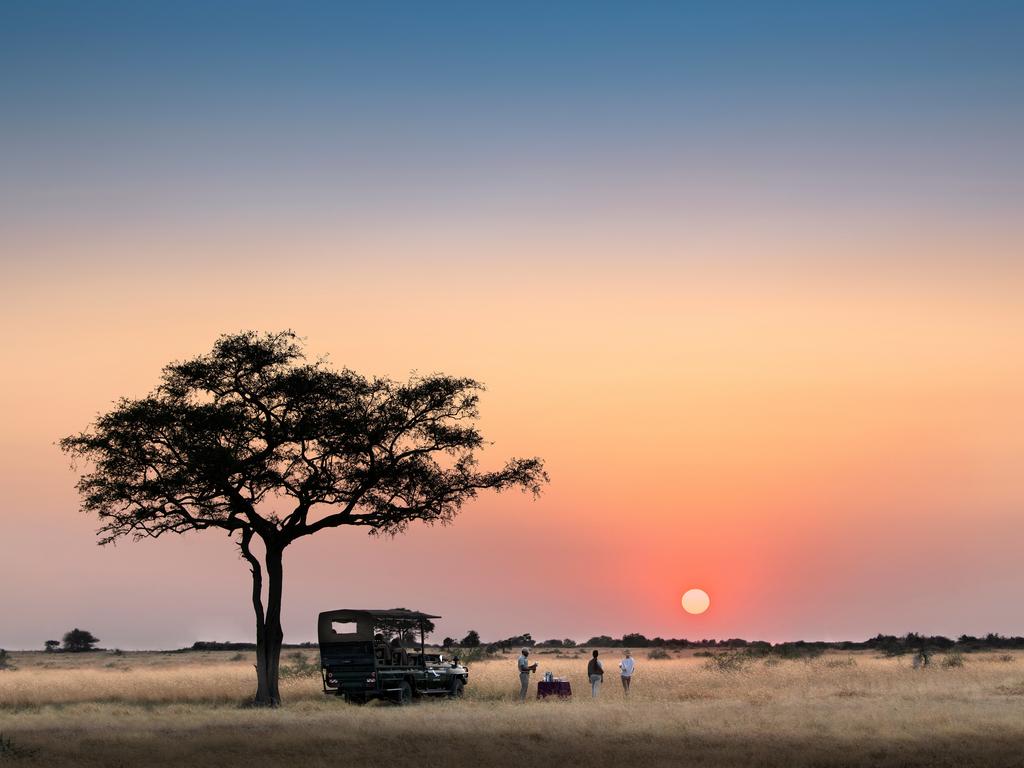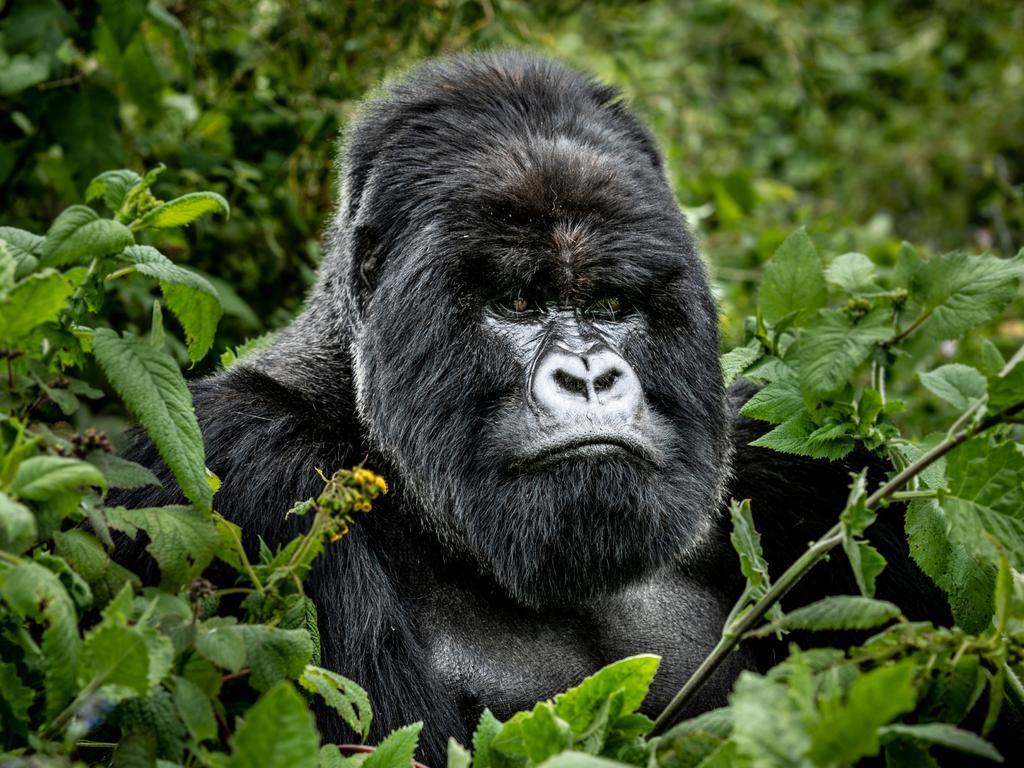How this former Zimbabwe hunting ground transformed into a wildlife sanctuary
This biodiversity hotspot was prime hunting territory for nearly 70 years but the 128,000ha reserve is now a safe haven for elephants, buffalo, zebras and many more animals.

In the tinder-dry, riverine woodlands of the mid-Zambezi, a pack of painted dogs is setting a trap. The alpha male and alpha female lead the hunt, heads down and ears flattened, silently stalking the impala, which thinks it’s camouflaged within a thicket. With spring-loaded speed the dogs flush the impala into a waiting ambush. The rest of the pack – three more adults and eight pups – pounce as the impala flees across the floodplains, flinging up its hind legs and spraying sand as the dogs nip at its heels. The chase is on.
Our guide Matt Munuwa floors the throttle and we plant our feet as our safari vehicle hurtles off in hot pursuit. With a sharp yank of the wheel, Matt steers us onto the sprawling banks of the Zambezi River, just in time to see the impala make a desperate leap into the water. The dogs skid to a halt at the edge of the cliff, watching intently as the impala swims away, narrowly avoiding the jaws of a semi-submerged Nile crocodile. It’s a thrilling climax to an action sequence straight from a Hollywood blockbuster.

If this were a movie, the scene would cut to our hero and heroine debriefing over ostrich biltong hor d’oeuvres back at their five-star, riverside safari camp in the heart of a UNESCO World Heritage site. Flying in by charter plane, a vital cog in an African itinerary expertly assembled by The Classic Safari Company, the cinematography is more IMAX theatre than action film. To the south rises a 1000m high escarpment; to the north the misty mountains of Zambia. Splitting the screen is the mighty Zambezi, more than 4km wide, braided by grassy islands and garnished with a sprinkle of hippos that look like borlotti beans dropped in a soup. Pan to Tembo Plains camp, the only Zimbabwean property to boast a Relais & Chateaux badge, luxurious yet seamlessly connected to its natural surroundings.
The vista screams epic, but for a long time this landscape was teetering towards tragedy. Located adjacent to Mana Pools National Park, this biodiversity hotspot was prime hunting territory for nearly 70 years, attracting trophy hunters hoping to bag the Big Five – lion, elephant, leopard, buffalo and rhino. Poachers cleaned up what was left. Once a refuge for critically endangered black rhino, by 1994 just 10 remained in the reserve. They were wisely whisked away for safekeeping.

In 2015, the concession for the 128,000ha Sapi Reserve was entrusted to Great Plains Conservation, an organisation founded by conservationists and filmmakers Dereck and Beverly Joubert. They promptly kicked out the hunters and, in 2022, launched one of Africa’s most ambitious rewilding projects, translocating 101 elephants from Save Valley Conservancy in the country’s southeast. The herculean task involved darting matriarchal herds from helicopters, hoisting the animals by crane onto flatbed trucks and driving them 900km, at a cost of $US10,000 per elephant.
Project Rewild Zambezi did more than replenish a depleted landscape; it restored genetic diversity. Hunters prized only the best bulls, weakening the gene pool and increasing the prevalence of tuskless elephants, a genetic mutation linked to ivory hunting. With the click of cameras replacing gunfire, wildlife is not only returning naturally, but learning to trust humans.
“A few years ago we didn’t see much,” says Matt, “and the animals were very skittish. But they’re now used to having us around.”

The Zimbabwe government’s recognition that the future of sustainable tourism hinges on conservation rather than hunting could represent a coming of age for the beleaguered country. It’s easy to forget that Zimbabwe once ranked near the top of the African hit list for Australians, with Qantas servicing Harare twice weekly in the 1990s. Not surprisingly, the land seizures of the early 2000s that condemned the country to seemingly irrevocable economic ruin also didn’t do wonders for tourism, and it fell off the travel radar, replaced by northern neighbour Zambia.
Despite its well-documented dysfunction, Zimbabwe holds much appeal as a safari destination. For starters, you can expect to pay about half what you would in neighbouring Botswana for a comparable experience. Zimbabwean safari guides are the most highly qualified in Africa, the people are wonderful, and the country has a variety of ecosystems and landscapes like no other. It deserves a break.

Sapi Reserve sits at the country’s northern extent, and with the September sun nudging temperatures into the mid-40s, we keep close to our private plunge pool during the heat of the day. There are four double or twin tented suites, linked via a raised boardwalk. Free-standing internal stone walls partition the bathtub and shower from a cosy lounge and canopied king bed. Light floods in through large, river-facing windows, while a bedside “breezer” keeps the sleeping temperature bearable. Suites come stocked not only with a full minibar but binoculars and a professional-grade camera with a telescopic lens. The camp is unfenced and walking unchaperoned at night is a strict no-no. My dreams are soundtracked by the most incredible cacophony: stampeding elephants, wailing monkeys, the howling wind tearing at the canvas. But was I dreaming?
For families or larger groups, the two-bedroom Zanji suite promises an exclusive retreat, complete with a private chef and butler. A serene day spa overlooks the river flats (“we had to put a mesh screen up to keep the baboons from jumping on to the massage table,” confesses camp manager Lindy with a sigh).

The main lodge is styled with a Bedouin bent, all rough-sawn teak tables, antique trunks and Persian rugs. A fashion boutique and wine cellar lie behind weathered Zanzibari doors, a nod to traders from the Swahili Coast who sailed their dhows up the Zambezi centuries ago in search of gold. We enjoy sundowners around a firepit set on a tiered deck constructed from railway sleepers salvaged from the original Bulawayo to Victoria Falls line, part of Great Plains’ commitment to cutting no new wood when constructing safari camps.
Chef Idea liaises with us about every meal, and on our final night invites us to help prepare the southern African staple dish of mielie meal, a type of maize porridge eaten by locals two or three times a day. We enjoy our dinner sans cutlery, shaping the mielie meal by hand to scoop up a succulent, slow-cooked oxtail stew.
Our daily game drives reap rich rewards. Buffalo, zebras and eland – the world’s largest antelope – graze the floodplains, a colony of bright pink carmine bee-eaters flock on tree branches dangling above the river. We train our binoculars on Lillian’s lovebirds, a stunning but rarely glimpsed parrot. We even spot a few notoriously bashful nyala antelopes, their fluffy tails and creamy stripes a thrill to glimpse through the thicket. Their caution is warranted, for leopards are lurking.

We don’t see them, at least not at first, but Matt spots evidence of their handiwork: an impala carcass draped over a branch high in a jackalberry tree. “The leopard is hiding its kill,” Mat says. “It will come back when it gets dark.” We return to the tree as darkness envelops the woodland. Matt scans the bush with a torch, sure the killer will return. True to his word, the leopard emerges from the shadows and with an effortless leap is up the tree, burying its head in the impala. A gruesome aftermath greets us next morning, the headless carcass, legs splayed and hanging from the tree like a warning. Our production has suddenly become a horror flick.
The poor impalas seem to be the mielie meal of the floodplains, but it’s the painted dog pack that wins our hearts, the playful pups oblivious to their perilous future as they tug each other’s tails and romp in the crisp, red leaves beneath mopane trees. To learn more about their plight we visit the camp research station, where ecologist Thomas Mutonhori is searching for reasons to explain their population crash throughout southern Africa over the past decade. He says most of the eight pups we’ve been tracking will likely be killed by hyenas before the end of the wet season. As part of Tembo Plains’ ongoing rewilding program a new pack of 13 dogs will shortly arrive. The long-term goal is to one day reintroduce black rhino. “They are keystone species,” Thomas says. “They shape the landscape and are vital for ecosystem health.”

We also meet four female rangers employed by Great Plains as part of a program to encourage rural women to choose careers in conservation. “Our days are busy,” says Rachel Sibanda, who graduated Chinhoyi University of Technology with a degree in wildlife ecology. “We’ve been creating identification kits for the carnivores using camera traps, and monitoring the collared elephants. Some of them have calves now, it’s beautiful to see.”
There’s one more thing Matt wants to show us before we leave. He drives us to a clearing and pulls up beside an enormous pile of animal bones – baboons, hyenas, lions, zebras and elephants – scattered by scavengers and bleached white by the sun. This was one of the hunters’ killing fields.
Matt turns the engine off and we sit for a few moments. “Elephants don’t forget,” he says. “Some of the ones we saw today would remember seeing their families shot. These bones are their brothers and sisters.”
In time the bones will return to dust, but for now they remain as a haunting reminder of the past; a poignant prop in the ultimate redemption film, now showing.
In the know
The Classic Safari Company designs bespoke wildlife safaris in more than 12 African countries. Tembo Plains safari camp is open from April to November and is located about 388km north of Harare, serviced by charter flights from Harare, Victoria Falls and Kariba. From $US1205 ($1860) a person a night, including game drives, river cruises, all meals and beverages and return airstrip transfers.
Ricky French was a guest of The Classic Safari Company.




To join the conversation, please log in. Don't have an account? Register
Join the conversation, you are commenting as Logout